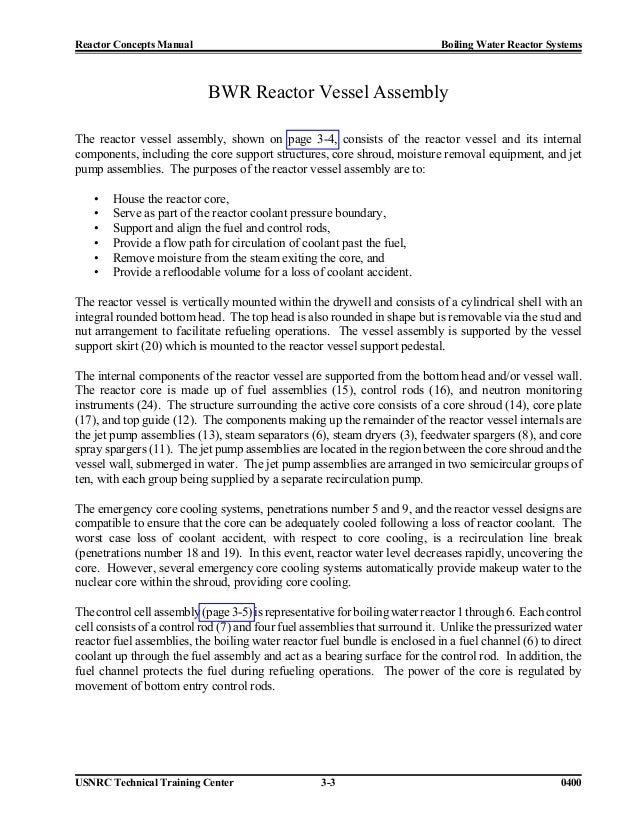Nrc Technical Training Center Reactor Concepts Manual
Read and Download Nrc Technical Training Center Reactor Concepts Manual Free Ebooks in PDF format - ANOTHER SIDE OF PARADISE ANSONIA CLOCK COMPANY CRYSTAL REGULATORS 1905 ANSIA E. This Usnrc Technical Training Center Reactor Concepts Manual. Transients in the Reactor Pressure Vessel NRC. Training Center Reactor Concepts Manual. Jan 8, 2016 - Reactor Concepts Manual Transportation of Radioactive Material USNRC Technical. USNRC Technical Training Center 11-1 Rev 0703. Of these agencies, the DOT and NRC are the primary ones issuing regulations.
Reactor Concepts Manual Transportation of Radioactive MaterialTransportation ofRadioactive Material Haza rdo us Santa FeThe issues associated with the transportation of radioactive material are very complex due in part to theregulatory requirements of both the NRC and the Department of Transportation (DOT). As a result, this will bea very brief overview of the relevant issues.USNRC Technical Training Center 11-1 Rev 0703 Reactor Concepts Manual Transportation of Radioactive Material UN ClassificationClass 1 ExplosivesClass 2 GasesClass 3 Flammable LiquidsClass 4 Flammable SolidsClass 5 Oxidizers and Organic PeroxidesClass 6 Poisonous and Etiological MaterialsClass 7 Radioactive MaterialsClass 8 CorrosivesClass 9 Miscellaneous Hazardous MaterialsAll hazardous materials which could potentially be transported are assigned to one of the nine UnitedNations Classes.
The anaesthesiologists and radiologists constitute the high-risk personnel getting exposure to radiation during diagnostic and therapeutic radiological procedures. It has become the need of the hour for the anaesthesia providers to be in close contact with the patient both inside and outside the operative room. The unit of radiation is known as grey (Gy) (1 Gy = 100 rad) and when absorbed that dose is termed as Sievert (Sv).

The dose limit for the exposure stays in the range of 150Sv-500Sv/year. Multiplying and metabolically active cells are most sensitive to radiation hazards. The exposure hazards range from the simplest skin injury and cataract to the most lethal hazard, malignancy. The harmful effect of radiation is more pronounced in pregnant women when the exposure is continuous, and more intense with dose greater than 0.5 Gy. Monitoring at the thyroid collar, inside and outside the protective gear of lead apron is advisable for all staff. The education and awareness about the risk involved, care that needs to be exercised are to be highlighted to all the susceptible health care personnel.
Javelin Technical Training Center
The infrastructure plan and safe positions so as to minimise the effects are to be understood. The basic principle of prevention such as limiting the time of exposure keeping a safe distance and use of proper protective shield should be strictly adhered to. Since the radiation beam is most often directed perpendicularly, the anaesthesiologists when standing at head end of the patient, may receive lesser dose of radiation. Hence proper positioning of anaesthesiologist is essential to minimize the risk of radiation. Anaesthesia workstation could be used as an additional shield by rotating it to 180° such that the back of the equipment is facing the operative field thus giving the anaesthesiologist an additional cover.